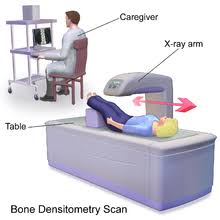Introduction:
As we progress further into 2024, understanding and measuring body health continues to evolve. Body Mass Index (BMI) has long been a standard tool for assessing body composition, but it has its limitations. In this blog, we will explore the fundamentals of BMI and discuss alternatives to BMI in 2024, alternatives that offer a more nuanced view of health and fitness.

Table of contents
What is BMI?
BMI is a simple calculation used to classify an individual’s body weight relative to their height. It is calculated by dividing a person’s weight in kilograms by the square of their height in meters. The resulting value places individuals in categories such as underweight, normal weight, overweight, or obese, providing a quick assessment of potential health risks related to weight.
Limitations of BMI:
Doesn’t Distinguish Between Fat and Muscle:
BMI does not differentiate between muscle mass and fat mass, which can misclassify muscular individuals as overweight or obese.
Not Reflective of Body Fat Distribution:
BMI overlooks the distribution of fat which is a crucial factor in health risks. Central obesity (fat stored around the waist) is more harmful than fat stored elsewhere.
One-Size-Fits-All Approach:
BMI does not account for variations in physical characteristics across different ethnic groups or genders.
Emerging Alternatives to BMI in 2024:
The limitations of BMI have led to the development and adoption of alternative metrics that provide a more comprehensive assessment of an individual’s health status.
1.Body Adiposity Index (BAI):
Unlike BMI, BAI measures body fat directly. It is calculated using the hip circumference and height of the individual. BAI provides a more accurate estimate of body fat percentage, particularly in populations with varying body compositions.

2. Waist-to-Height Ratio (WHtR):
WHtR is a simple metric that compares the circumference of the waist to the person’s height. It effectively indicates the distribution of body fat and offers a better risk assessment for obesity-related diseases like type 2 diabetes and heart disease.

3. Dual-Energy X-ray Absorptiometry (DEXA):
DEXA scans provide detailed images of the body and precisely measure bone density, fat, and muscle mass. Although more expensive and less accessible than BMI calculations, DEXA scans offer an accurate assessment of body composition.
To Read More About DEXA Click Here

4. Bioelectrical Impedance Analysis (BIA):
BIA devices use a low-level electrical current to measure body composition, including body fat and muscle mass. Modern BIA devices are more accessible and provide instant results, making them a popular tool for personal health management.

Conclusion:
As we continue to seek better ways to measure health and fitness, alternatives to BMI are becoming more prominent in 2024. These new tools offer a broader and more precise assessment of body composition and health risks, helping individuals tailor their health and fitness strategies more effectively. Whether through technological advancements like DEXA and BIA or simpler calculations like BAI and WHtR, the future of health measurement looks promising, providing tools that cater to diverse needs and lifestyles.
To Know About Superfoods Read this
FAQs About BMI and Its Alternatives:-
BMI continues to be used because it is a simple, quick, and cost-effective method to classify populations for epidemiological studies.
DEXA scans provide the most detailed information on body composition, including precise measurements of bone density, fat, and muscle mass.
Yes, measuring your waist circumference and then dividing it by your height can give you your WHtR, which you can easily do at home.
BIA is generally safe; however, it is not recommended for pregnant women or people with electronic medical implants, such as pacemakers.
